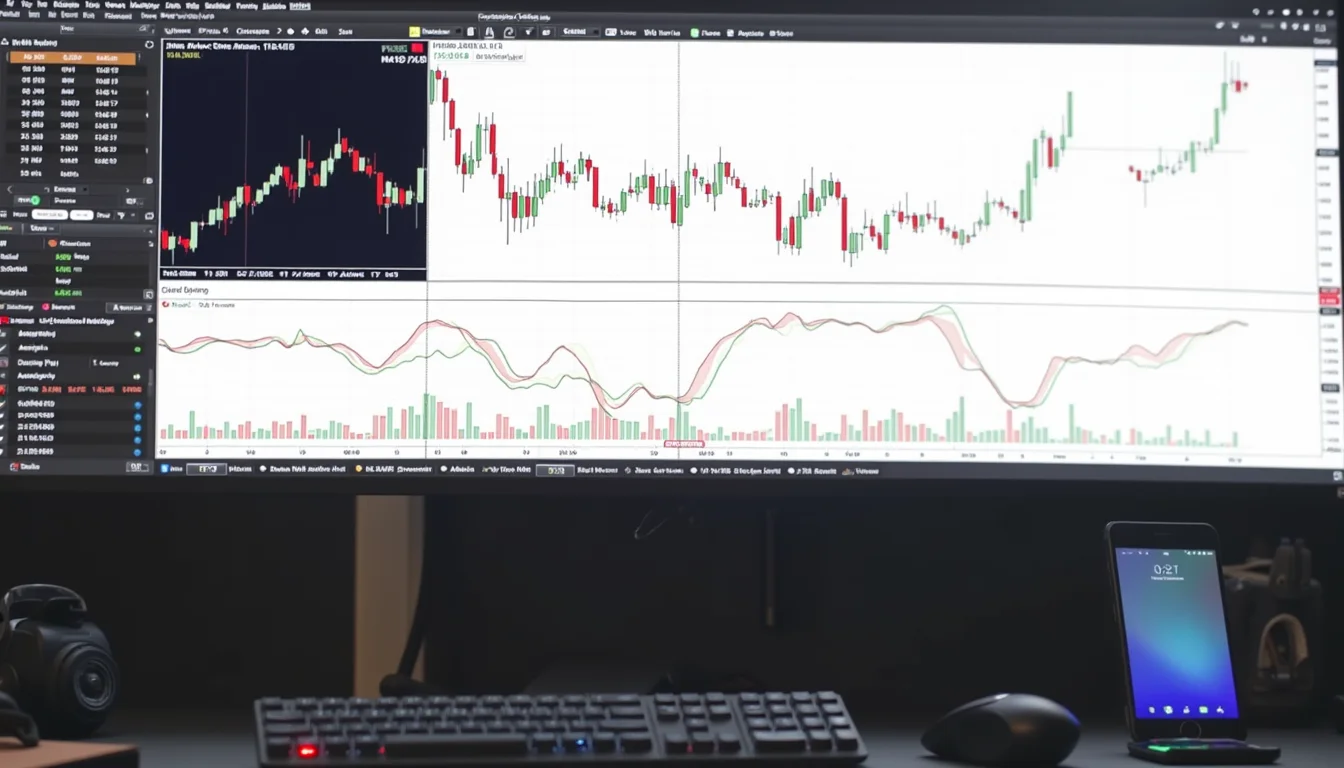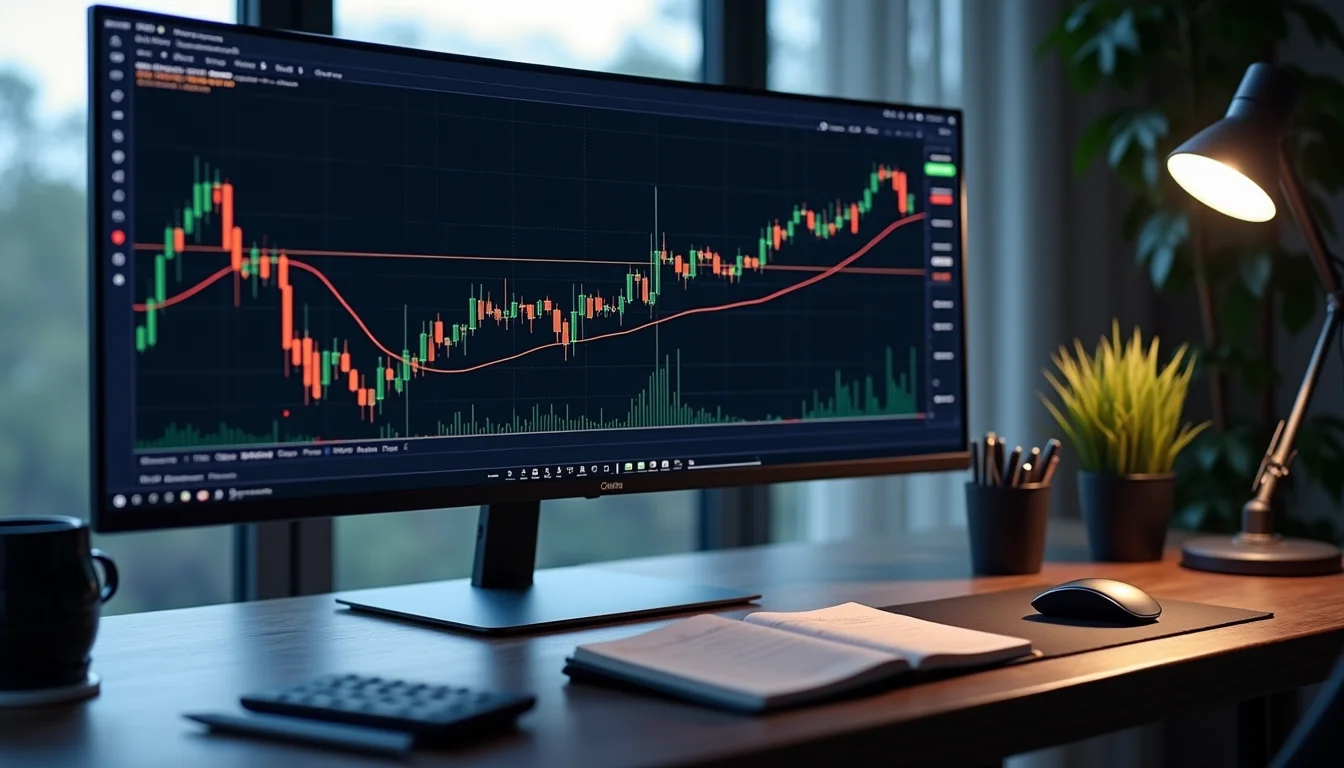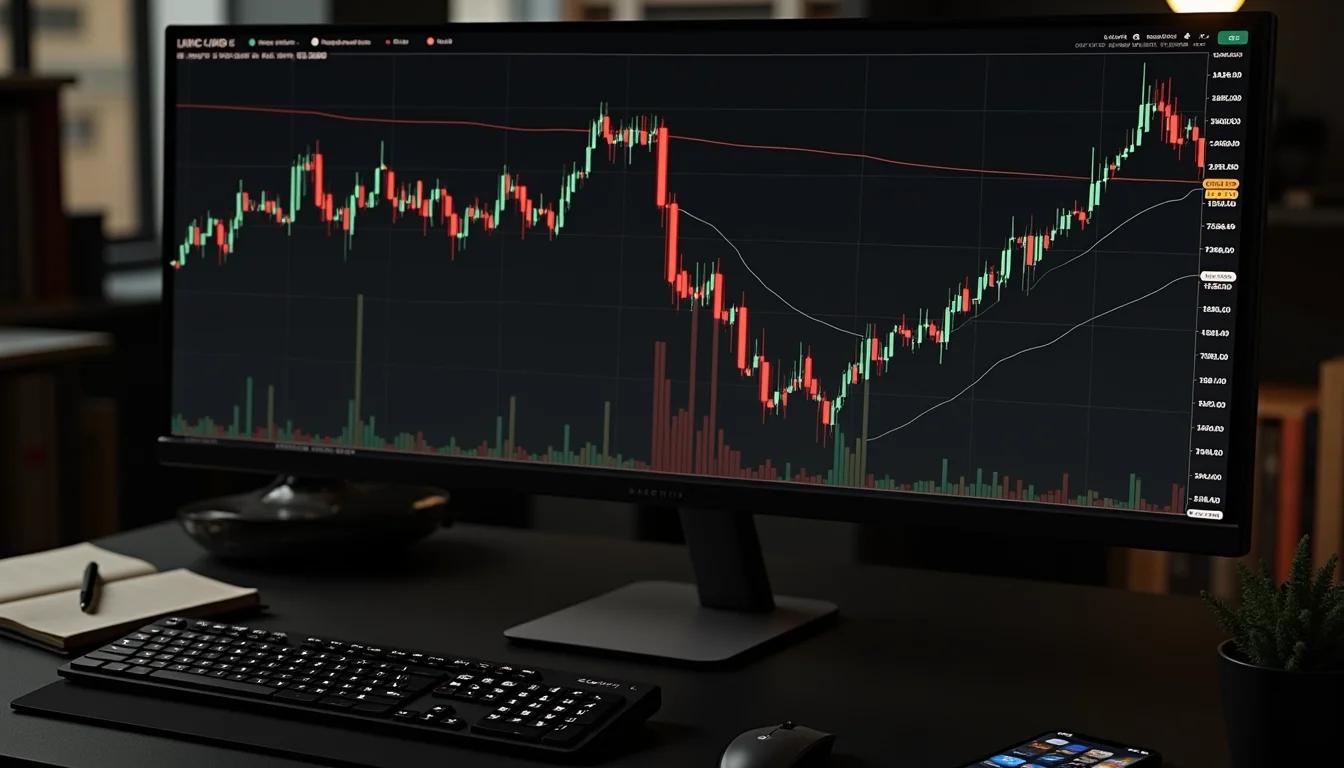Introduction
I remember staring at the MetaTrader platform for the first time back in 2012, completely overwhelmed by the sea of buttons, charts, and indicators. The EUR/USD chart was moving, my demo account was loaded, but I had no clue how to actually place a trade that made sense. Sound familiar? That initial confusion cost me real money when I eventually transitioned to live trading - mistakes I could have avoided with proper guidance.
Over the past decade, I've watched countless traders struggle with the same basic platform navigation issues that ultimately impact their bottom line. The truth is, most trading education focuses on strategy while ignoring the fundamental tool we all use daily. That's why I've put together what I genuinely believe is the best metatrader guide you'll find - not just another surface-level overview, but a deep dive into the platform features that actually matter for consistent profitability.
By the time you finish this guide, you'll have mastered MetaTrader's interface, customized your workspace for maximum efficiency, implemented professional risk management tools, and learned advanced techniques that separate amateur traders from serious professionals. Whether you're completely new to trading or looking to optimize your existing setup, this comprehensive walkthrough will transform how you interact with the world's most popular trading platform.
Getting Started: Platform Setup That Actually Works
Most beginners download MetaTrader and immediately jump into trading without proper configuration. I made this exact mistake, and it led to inconsistent results until I standardized my approach. The initial setup process might seem tedious, but it's the foundation everything else builds upon.
Choosing Between MT4 and MT5
This decision trips up more traders than you'd expect. MT4 specializes in forex and CFDs with simpler functionality, while MT5 offers more markets and advanced features. Here's my practical take: if you're focusing primarily on forex, stick with MT4. The community support, available indicators, and overall stability make it the better choice. I've used both extensively, and for pure forex trading, MT4's simplicity wins. However, if you plan to trade stocks, futures, or need more advanced backtesting capabilities, MT5 is worth the learning curve.
When I transitioned to including commodities in my portfolio, I moved to MT5 specifically for the improved market depth and execution reporting. But for three years of pure forex trading, MT4 served me perfectly. Don't overcomplicate this decision - choose based on your actual trading needs, not hypothetical future scenarios.
Broker Selection and Platform Configuration
Your broker choice directly impacts your MetaTrader experience. I learned this the hard way when I started with a broker offering slow execution and frequent requotes. Look for brokers with:
- ECN/STP execution models (avoid market makers)
- Tight spreads on your preferred pairs (under 1.0 pips on EUR/USD)
- Fast order execution (under 100ms)
- No restrictions on trading strategies
Once you've chosen your broker, these initial configuration steps will save you countless headaches:
- Set up your charts with candlestick display and default to 1H timeframe
- Configure template defaults to include volume and moving averages
- Enable one-click trading from the toolbar
- Set default order sizes based on your risk management rules
I typically start traders with a simple template containing EMA (20,50,200), RSI, and MACD - enough information without analysis paralysis. Remember to save this as your default template so every new chart loads with your preferred settings.
Mastering the MetaTrader Interface
The MetaTrader interface contains everything you need, but finding it efficiently separates professionals from amateurs. After mentoring dozens of traders, I've identified the most critical elements that deserve your attention.
Essential Workspace Layout
Your screen real estate is valuable - don't waste it. I recommend this proven layout that's evolved through thousands of trading hours:
- Left Side: Market Watch and Navigator (collapsed when not in use)
- Center: Main chart area with 2-4 currency pairs maximum
- Right Side: Trade tab and terminal window
- Bottom: Strategy Tester or additional charts
I keep my Market Watch limited to 8-10 major pairs even though hundreds are available. Why? Focus. When EUR/USD presents a setup, I don't want distractions from exotic pairs moving differently. This disciplined approach helped me increase my win rate from 52% to 63% within six months simply by eliminating noise.
Customizing Charts for Maximum Efficiency
Default chart settings are designed for beginners, not professionals. Here are the adjustments that made the biggest difference in my trading:
First, change your chart background to a dark gray instead of pure black. This reduces eye strain during long sessions while maintaining contrast. Second, adjust your candlestick colors to something intuitive - I use green for bullish, red for bearish with thin black borders. Third, increase the chart font size to at least 10pt so you're not squinting at price levels.
The most valuable customization? Setting up multiple time frame analysis in a single view. I typically have daily, 4H, and 1H charts for the same pair arranged vertically. This gives me immediate context for any trade setup and prevents the common mistake of trading against higher time frame trends.
Chart Analysis Tools That Actually Work
MetaTrader comes packed with dozens of indicators, but professional traders use only a handful consistently. Through extensive testing and real-money trading, I've narrowed down the essential tools that provide genuine edge.
Essential Built-In Indicators
Don't fall into the indicator overload trap. These three built-in tools, when used properly, cover 90% of analysis needs:
Moving Averages: I use EMAs (20,50,200) across multiple time frames. The 200 EMA acts as my trend filter - I only take long positions above it and short positions below. The 20 and 50 EMAs help identify momentum shifts. Last Thursday, watching the 20 EMA cross above the 50 on GBP/USD 4H gave me an early entry that captured 85 pips.
RSI with Custom Settings: Default RSI settings generate too many false signals. I adjust to RSI (14) with levels at 30/70 instead of the standard 20/80. When RSI reaches 70 during an uptrend, I don't immediately short - I wait for divergence or a break of trend structure.
MACD Histogram: Forget the default settings. I use MACD (12,26,9) but focus primarily on the histogram for momentum shifts. When the histogram makes higher highs while price makes lower highs, that divergence often precedes significant moves.
Drawing Tools for Price Action Trading
The simplest tools often provide the clearest signals. I use three drawing tools religiously:
Horizontal Support/Resistance: Draw at obvious swing highs and lows, then adjust as markets evolve. I maintain these levels across time frames, watching how price reacts at each.
Trend Lines: Connect at least two significant swing points, but three touches validate the level. I recently caught a 120-pip move on USD/CAD by entering as price tested an established trend line for the fourth time.
Fibonacci Retracement: Apply from significant swing low to high (or vice versa). I place pending orders at the 38.2%, 50%, and 61.8% levels with stop losses beyond the 78.6% level. This method has given me consistent 2:1 risk-reward opportunities.
Order Execution and Risk Management
Perfect analysis means nothing without proper execution and risk control. This section alone transformed my trading from break-even to consistently profitable.
Placing Trades Like a Professional
Amateurs click buttons randomly; professionals have a systematic approach to every entry. Here's my exact process:
- Identify setup on higher time frame (4H or daily)
- Switch to entry time frame (1H or 15M) for precise timing
- Set pending order 2-3 pips away from key level
- Calculate position size based on 1% account risk
- Set stop loss at logical invalidation point
- Set take profit at minimum 1.5:1 risk-reward ratio
Using this method, I recently took a EUR/JPY short from 158.40 with stop at 158.90 (50 pips risk) and target at 157.40 (100 pips reward). The trade hit my target in 36 hours, netting a clean 2R return.
Advanced Order Types
Market and limit orders are just the beginning. MetaTrader's advanced order capabilities provide significant advantages:
Stop Loss Orders: Always set these immediately after entry. I place mine beyond recent swing points or volatility-based calculations (ATR x 1.5). Never move stops away from price - this bad habit cost me $2,300 early in my career.
Trailing Stops: I use these selectively, typically on trend-following trades. For swing trades, I prefer manual adjustment at key levels. The auto-trailing function works well for capturing extended moves without micromanagement.
Multiple Take Profit Levels: Instead of a single profit target, I often scale out at 1R, then 2R, letting the final portion run. This balances guaranteed profits with home run potential.
Expert Advisors and Automated Trading
Automation transformed my trading business, but it requires careful implementation. After developing and testing hundreds of EAs, I've identified what actually works in live markets.
Finding and Testing Reliable EAs
The EA marketplace is filled with overhyped products that collapse in live trading. My due diligence process includes:
- Minimum 3-year backtest across multiple market conditions
- Forward testing on demo for 2-3 months
- Small live allocation (1-2% of account) for final validation
- Regular performance reviews and adjustments
I learned this lesson painfully with a "guaranteed profit" EA that showed amazing backtests but lost 40% in two weeks during unexpected volatility. Now I trust but verify everything.
Building Custom EAs
The real power comes from custom EAs that match your specific strategy. I code mine to execute my manual approach with perfect discipline. For instance, my trend-following EA enters on specific moving average configurations I've refined over years, managing risk exactly according to my rules.
If coding isn't your strength, consider using proven frameworks like our TradeMaster Pro Strategy as a foundation. The key is automation that enhances, not replaces, your edge.
Mobile Trading and Remote Management
Being chained to your desktop is neither practical nor necessary. MetaTrader's mobile platform, when used correctly, provides flexibility without compromising effectiveness.
Essential Mobile Features
The mobile app excels at monitoring and managing existing positions, not complex analysis. I use it primarily for:
Position Monitoring: Checking open trades, adjusting stops, taking partial profits. Last month, I closed a USD/CHF trade for 85 pips profit while waiting at the airport simply by dragging my take profit level.
Price Alerts: Setting notifications at key levels lets me know when potential setups are developing without constant screen watching.
Basic Chart Analysis: Quick trend assessment and support/resistance checks when away from my main workspace.
Setting Up Proper Mobile Workflow
My mobile trading rules prevent impulsive decisions while maintaining control:
- No new trade entries on mobile - analysis requires full workspace
- Only manage existing positions (stop adjustments, partial closes)
- Set phone to Do Not Disturb during focused analysis sessions
- Use tablet for more complex mobile analysis when necessary
This balanced approach means I can maintain my trading business while traveling without compromising my edge.
Advanced Tips From a Decade of MetaTrader Experience
These professional techniques took years to develop but will accelerate your learning curve significantly. They represent the difference between basic platform use and genuine mastery.
First, create custom symbols for spread trading and synthetic instruments. I track the AUD/NZD spread alongside the individual pairs, often finding divergence opportunities. Second, use the Strategy Tester for manual strategy validation, not just EA testing. I regularly backtest discretionary approaches by manually "trading" historical data and tracking performance.
Third, implement template switching for different market conditions. I have separate templates for high volatility (wider stops, different indicators) versus range-bound markets. Switching between them takes one click but dramatically improves performance appropriateness.
Fourth, master the depth of market feature if your broker provides it. Seeing actual order flow transformed my understanding of support and resistance. Instead of guessing at levels, I watch where large orders cluster and trade accordingly.
Finally, integrate MetaTrader with external tools like TradingView for enhanced analysis while executing trades in MetaTrader. The combination provides the best of both platforms without compromise.
Wrapping Up Your MetaTrader Mastery
Mastering MetaTrader isn't about knowing every button and feature - it's about deeply understanding the tools that actually impact your trading performance. The platform is your cockpit, and proficiency directly translates to better decision-making, faster execution, and ultimately, improved profitability.
The techniques I've shared represent thousands of hours of testing, trading, and refinement. They work because they're practical, not theoretical. From proper initial setup to advanced automation, each element serves the single purpose of creating consistent trading results.
Your next step? Implement one section at a time. Start with platform configuration, then move to chart analysis, then order execution. Within weeks, you'll notice significantly improved workflow efficiency and trading confidence. Remember that platform mastery is an ongoing process - I'm still discovering new ways to optimize my use of MetaTrader after ten years.
Ready to take your trading to the next level? Explore our complete trading strategy guide to combine platform mastery with proven methodology. Or if you have specific questions about implementing these techniques, reach out directly - I'm always happy to help serious traders improve their game.
What's the one MetaTrader feature you've underutilized that could transform your trading if mastered?
Frequently Asked Questions
How long does it typically take to become proficient with MetaTrader?
Most traders reach basic proficiency within 2-3 weeks of consistent use, but true mastery takes 3-6 months. The key is deliberate practice - actually using the features daily rather than just reading about them. I recommend paper trading for the first month while exploring all platform functions.
What's the single most important MetaTrader feature for beginners to master?
Without question, order execution and risk management tools. Perfect analysis means nothing if you can't properly enter, manage, and exit trades. Focus on understanding stop losses, take profits, and position sizing before diving into advanced indicators or automation.
Can I use custom indicators from other traders?
Absolutely, but be selective. I test any custom indicator on demo first, watching how it behaves across different market conditions. Many free indicators repackage basic concepts with fancy visuals. Stick to indicators that provide genuine unique value rather than just visual clutter.
How do I avoid common MetaTrader mistakes?
The biggest mistakes include trading without stops, overloading charts with indicators, and changing strategies too frequently. Implement strict risk management rules, limit yourself to 3-4 core indicators, and give any approach sufficient time to prove itself before abandoning it.
Is mobile trading reliable for serious traders?
For monitoring and managing positions, absolutely. For complex analysis and new trade entries, I strongly prefer desktop. The mobile app works well for adjustments but lacks the precision and information density needed for optimal decision-making. Use it as a supplement, not replacement.


